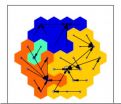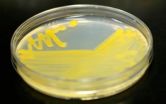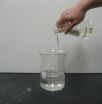New mortgage design would minimize home foreclosures
2011-01-20
(Press-News.org) With mortgage loan defaults on the rise yet again, two mortgage researchers are proposing a new type of mortgage contract that automatically resets the balance and the monthly payment based on the mortgaged home's market value.
Brent Ambrose, Smeal Professor of Real Estate and director of the Institute for Real Estate Studies at the Penn State Smeal College of Business, and Richard Buttimer, a professor in the Belk College of Business at the University of North Carolina at Charlotte, call their new mortgage contract the "adjustable balance mortgage" and contend that it reduces the economic incentive to default while costing about the same as a typical fixed-rate mortgage. Under real-world conditions, including the presence of unrecoverable default transaction costs to the lender, this new mortgage contract is better for both lenders and borrowers.
"The threat of foreclosure is not sufficient to prevent widespread default when house prices fall significantly," Ambrose and Buttimer write. "Our new mortgage automatically resets the principle balance at various dates to the minimum of the originally scheduled balance or the value of the house, reducing the borrower's incentive to default if the house value declines."
At origination, the adjustable balance mortgage resembles a fixed-rate mortgage -- it has a fixed contract rate and is fully amortizing. From that point on, at fixed, pre-set intervals, the value of the house would be determined based on changes to a local house price index. If the house value is found to be lower than the originally scheduled balance for that date, the loan balance is set equal to the house value, and the monthly payment is recalculated based on this new value. If the house retains its initial value or increases in value, then the loan balance and payments remain unchanged, just as in a standard fixed-rate mortgage.
For example, if a homeowner was found to owe more than the current market value of her home at one of the predetermined quarterly adjustment dates, then her balance would reset to the current market value and her monthly payment would be lowered as a result. At the next reset interval, if the market had recovered and the house was now worth more than what the homeowner owes, the mortgage balance reverts back to the originally scheduled balance, resulting in a higher monthly payment but one that does not exceed the payment specified at origination.
This new arrangement results in a sharing of the home-price risk between lender and borrower while providing an economic incentive for the borrower to maintain the property even during significant price declines.
"Before the loan balance is reset, the borrower will have lost whatever initial equity they had in the property, plus any equity that they would have built-up through the amortization process," the researchers write. "Should the house price fall below the balance triggering a reset, and the house value then subsequently rises, the lender recovers their lost value first. In addition, if the house value rises above the originally scheduled balance on a reset date, then the owner begins to recover their equity as well."
Through financial modeling and analysis, Ambrose and Buttimer determine that the adjustable balance mortgage would have a lower contract rate than the standard fixed-rate mortgage when the loan-to-value ratio is above 80 percent. Further, they find that their new mortgage provides lenders with an incentive to use a derivative contract to hedge against the risk of home price declines.
According to Ambrose, analysis of this new mortgage provides insight into why the federal loan modification programs are not as successful as expected. The modification plans presented by the U.S. Treasury, Federal Reserve, and FDIC focus strictly on borrower payment-to-income ratios, and, as a result, do not remove the incentive to default for long. In fact, the Office of the Comptroller of the Currency has reported that up to 37 percent of modified mortgages were 60 days into a second default within six months of the modification.
"The only way to truly reduce the default probability is to either reset the mortgage balance to a LTV that is lower than 100 percent, probably around 80 percent, or have frequent, predictable balance resets," Ambrose says. "The key implication is that the programs rolled out by U.S. regulatory authorities will not significantly reduce defaults unless house prices rapidly stabilize or go up, independent of issues such as moral hazard."
###"The Adjustable Balance Mortgage: Reducing the Value of the Put" is scheduled for publication in a forthcoming issue of Real Estate Economics.
ELSE PRESS RELEASES FROM THIS DATE:
VIMS team glides into polar research
2011-01-20
Researcher Walker Smith of the Virginia Institute of Marine Science, College of William and Mary, has been conducting shipboard studies of biological productivity in Antarctica's Ross Sea for the last three decades. This year he's letting underwater robots do some of the work.
Smith and graduate student Xiao Liu are using a two-year grant from the National Science Foundation to deploy and test a free-swimming underwater glider in the frigid waters of the Ross Sea near the U.S. McMurdo Research Station. The grant also funds efforts by fellow VIMS professor Marjorie Friedrichs ...
Research provides new kidney cancer clues
2011-01-20
Grand Rapids, Mich. (January 19, 2011) – In a collaborative project involving scientists from three continents, researchers have identified a gene that is mutated in one in three patients with the most common form of renal cancer. The gene – called PBRM1 – was found to be mutated in 88 cases out of 257 clear cell renal cell carcinomas (ccRCC) analysed, making it the most prevalent to be identified in renal cancer in 20 years.
The identification of a frequently mutated gene provides new insights into the biology of the disease, which will be critical in the continued effort ...
Mathematical model explains how complex societies emerge, collapse
2011-01-20
The instability of large, complex societies is a predictable phenomenon, according to a new mathematical model that explores the emergence of early human societies via warfare. Capturing hundreds of years of human history, the model reveals the dynamical nature of societies, which can be difficult to uncover in archaeological data.
The research, led Sergey Gavrilets, associate director for scientific activities at the National Institute for Mathematical and Biological Synthesis and a professor at the University of Tennessee-Knoxville, is published in the first issue of ...
Roundworm unlocks pancreatic cancer pathway
2011-01-20
Chapel Hill, NC – The National Cancer Institute estimates that more than 43,000 Americans were diagnosed with pancreatic cancer last year and more than 36,000 died from the disease. Despite advances in genetic science showing that the Ras oncogene is mutated in virtually all pancreatic cancers, scientists have been frustrated by the complexity of the signaling pathways in humans, which make it difficult to pinpoint potential therapeutic targets.
In a study published today in the Cell Press journal Developmental Cell, a team of researchers led by Channing Der, PhD, Distinguished ...
Speeding up Mother Nature's very own CO2 mitigation process
2011-01-20
LIVERMORE, Calif. – Using seawater and calcium to remove carbon dioxide (CO2) in a natural gas power plant's flue stream, and then pumping the resulting calcium bicarbonate in the sea, could be beneficial to the oceans' marine life.
Greg Rau, senior scientist with the Institute of Marine Sciences at UC Santa Cruz and who also works in the Carbon Management Program at Lawrence Livermore National Laboratory, conducted a series of lab-scale experiments to find out if a seawater/mineral carbonate (limestone) gas scrubber would remove enough CO2 to be effective, and whether ...
Science Translational Medicine: 'Creating Hope Act' incentivizes pediatric drug R&D
2011-01-20
Washington, DC — Recent legislative and regulatory actions make great strides toward establishing much needed incentives for pharmaceutical companies and others to develop and test more medications for pediatric rare diseases, including pediatric cancers, according to commentary by experts from Children's National Medical Center. The commentary appears in the January 19 issue of Science Translational Medicine.
"Pediatricians who treat children with serious and life-threatening diseases often find themselves face to face with the inadequacies of pediatric drug development," ...
Small molecules may prevent ebola infection
2011-01-20
Ebola, a virus that causes deadly hemorrhagic fever in humans, has no known cure or vaccine. But a new study by University of Illinois at Chicago scientists has uncovered a family of small molecules which appear to bind to the virus's outer protein coat and may inhibit its entry into human cells.
The results are to be published in the Journal of Medicinal Chemistry and are now online.
Previous studies have shown that small molecules can interfere with the Ebola infection process, says Duncan Wardrop, associate professor of chemistry at UIC and corresponding author of ...
Like humans, amoebae pack a lunch before they travel
2011-01-20
Some amoebae do what many people do. Before they travel, they pack a lunch.
In results of a study reported today in the journal Nature, evolutionary biologists Joan Strassmann and David Queller of Rice University show that long-studied social amoebae Dictyostellum discoideum (commonly known as slime molds) increase their odds of survival through a rudimentary form of agriculture.
Research by lead author Debra Brock, a graduate student at Rice, found that some amoebae sequester their food--particular strains of bacteria--for later use.
"We now know that primitively ...
University of Illinois study confirms glycerin as a feasible feedstuff for swine
2011-01-20
An increased interest in biofuel production and a growing need to find cost-effective livestock feedstuff alternatives has led University of Illinois researchers to further evaluate the use of glycerin in swine diets.
This study, led by U of I graduate research assistant Omarh Mendoza, was published in the Journal of Animal Science and reports that swine diets may include up to 15 percent glycerin and achieve similar performance to a conventional corn:soybean diet.
"Glycerin is not a new product, but little is known about its role as a feed ingredient for swine," ...
A nanoscale rope, and another step toward complex nanomaterials that assemble themselves
2011-01-20
Scientists at the U.S. Department of Energy's Lawrence Berkeley National Laboratory (Berkeley Lab) have coaxed polymers to braid themselves into wispy nanoscale ropes that approach the structural complexity of biological materials.
Their work is the latest development in the push to develop self-assembling nanoscale materials that mimic the intricacy and functionality of nature's handiwork, but which are rugged enough to withstand harsh conditions such as heat and dryness.
Although still early in the development stage, their research could lead to new applications that ...



